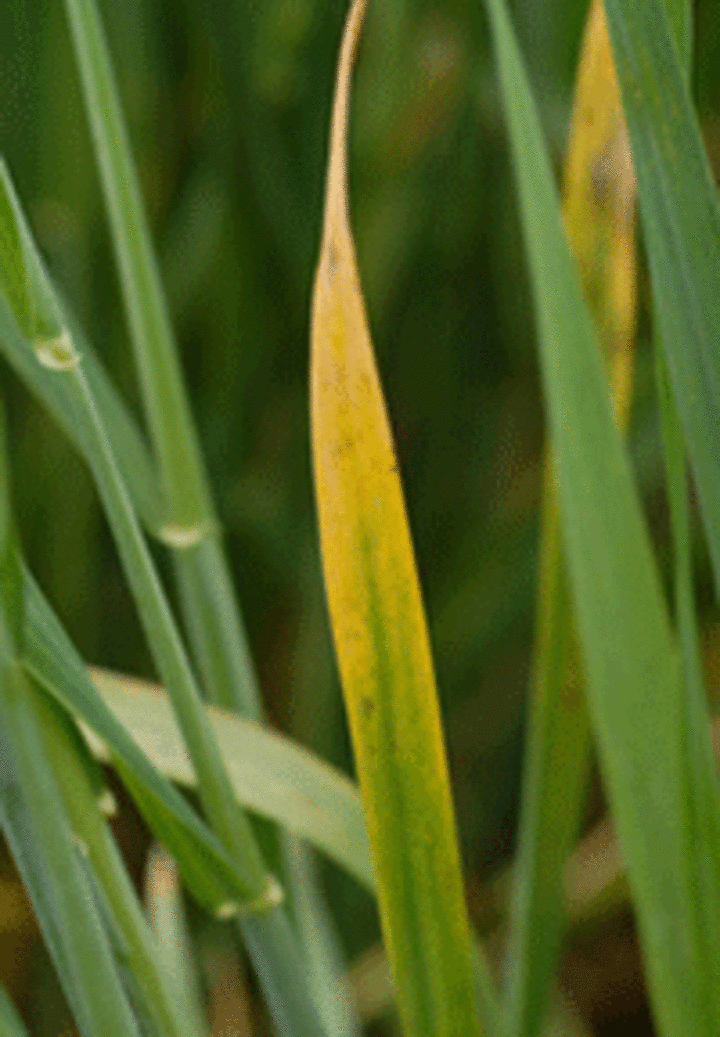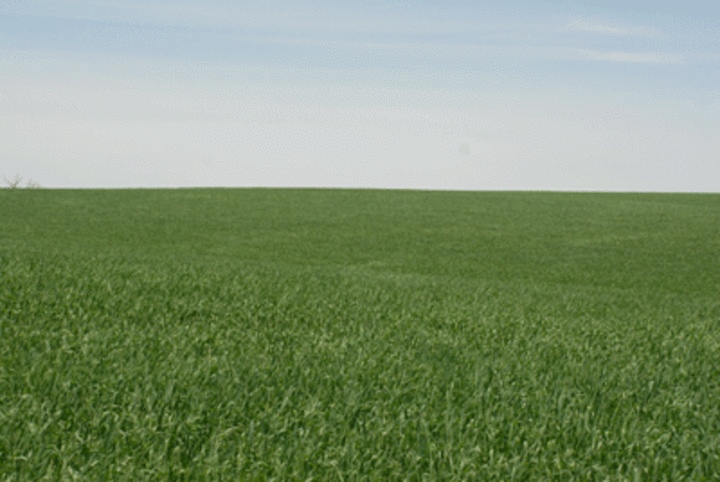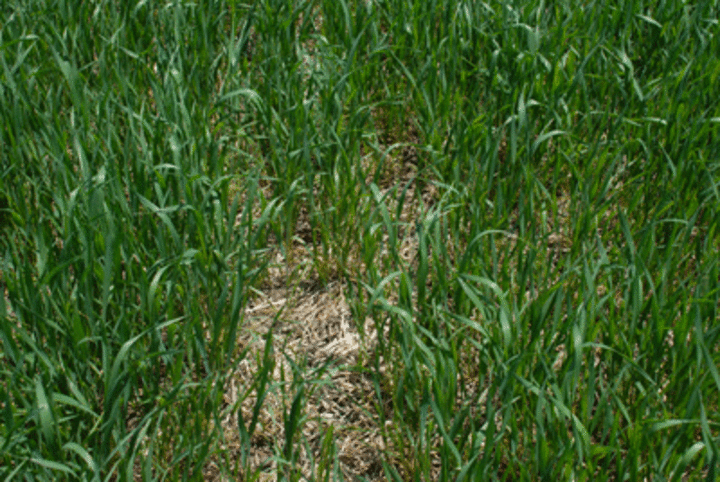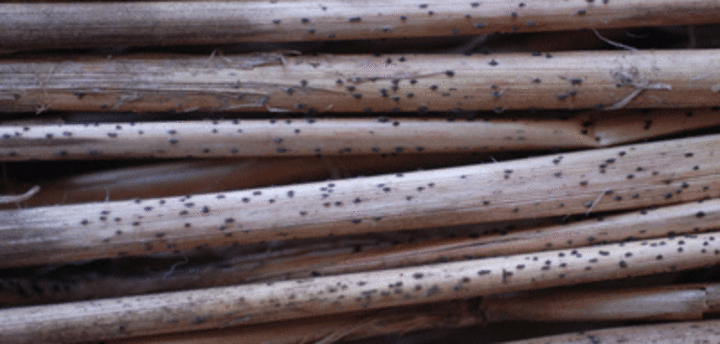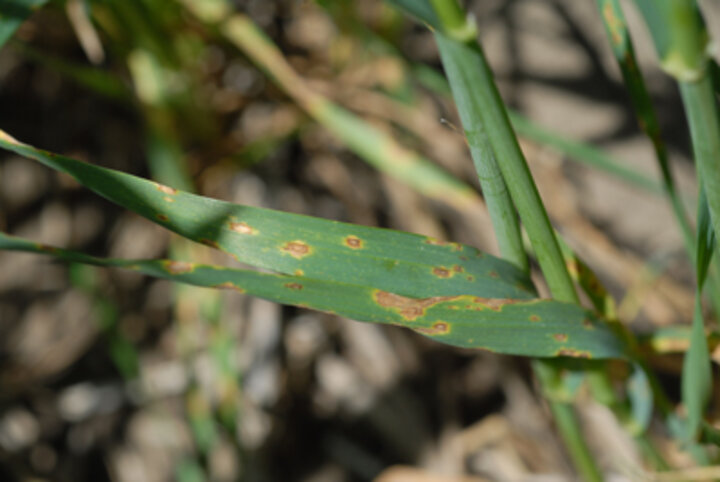
|
| Figure 1. Tan spot |
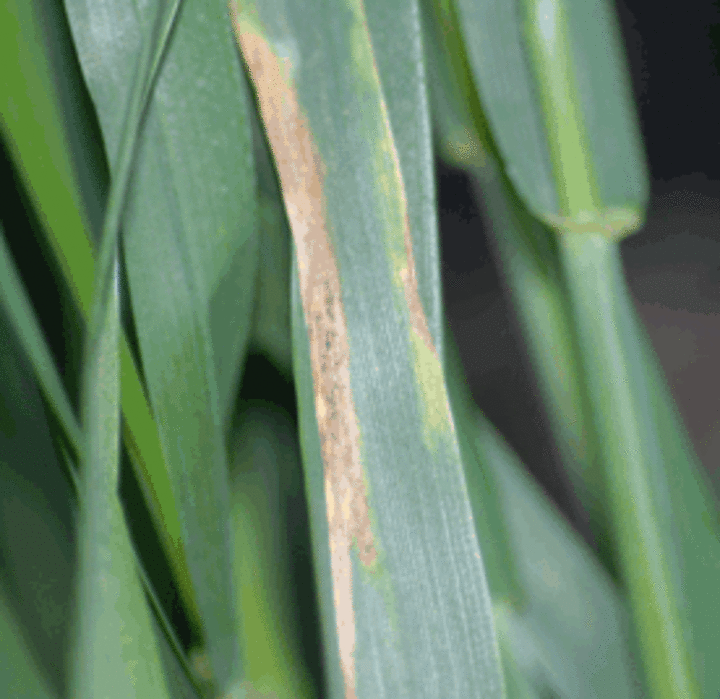
|
| Figure 2. Septoria leaf blotch |
May 15, 2009
On May 14 in Lancaster County, an apparently healthy looking field (Figure 4) had approximately 25% incidence of tan spot, but disease severity (percentage of leaf area covered with lesions) was low (about 2%). This field had a significant amount of wheat straw on the soil surface (Figure 5). Close examination of the wheat straw revealed pseudothecia (Figure 6). These are the sexual fruiting structures of the tan spot fungus that release the spores which cause initial infections in early spring.
In research plots at UNL's South Central Agricultural Lab in Clay County on May 14, tan spot and Septoria leaf blotch were observed at trace levels. Incidence of barley yellow dwarf was about 3% in one variety.
Farther west, in Keith County, no leaf spot diseases were observed in an irrigated grower's field near Paxton. There were isolated yellow plants at trace levels of incidence. The yellowing was attributed to soilborne wheat mosaic virus.
Rust in Kansas
Rust diseases have not been observed in Nebraska to-date. However, leaf rust was found in north central Kansas on May 11. Nebraska producers should monitor wheat fields for leaf rust in the next two to three weeks.
Wheat Disease Treatments
Scouting for diseases should continue and fungicide application should be timed to protect the flag leaf. Fungicide application is likely to be profitable if environmental conditions (wet weather and prolonged periods of no sunshine) favor development of damaging levels of disease.
A partial list of foliar fungicides registered for control of wheat diseases can be found in a story in the May 1 issue of CropWatch.
Stephen Wegulo
Extension Plant Pathologist
